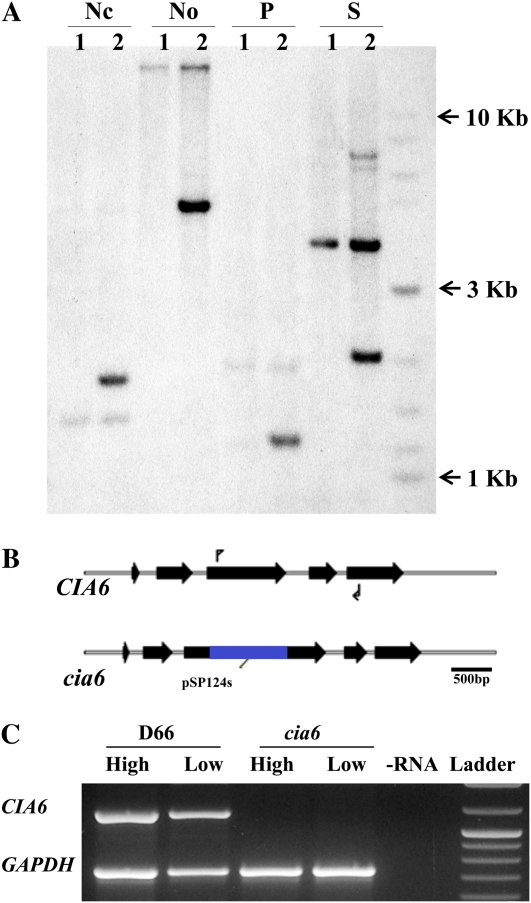Figure 3.
The mutant cia6 has an insertion in the CIA6 locus. A, Southern-blot analysis using the bleomycin resistance gene as a probe. D66 (lanes 1) and cia6 (lanes 2) genomic DNA was digested with NcoI (Nc), NotI (No), PstI (P), and SacI (S) and blotted onto a nylon membrane. The membrane was then probed with a 32P-labeled pSP124s-specific fragment containing BleR DNA and the Rbcs2 intron. The weak bands present in both D66 and cia6 correspond to the RbcS2 intron, which is present in both the BleR mutant as well as the endogenous RbcS2 gene. B, Genomic structure of the CIA6 locus in the wild type and cia6 showing the introns and exons, the site of the pSP124s insertion in cia6, and the cDNA primer sites (arrows) used for the RT-PCR analysis in C. C, RT-PCR analysis of the D66 and cia6 strains using poly(A) RNA from high- and low-CO2-grown cells as templates for RT. The primer-binding sites for CIA6 are shown in B and amplify an 1,100-bp product from cDNA. The internal control fragment (730 bp) is the product of primers designed to amplify glyceraldehyde-3-phosphate dehydrogenase (GAPDH). The last lane contains the 2-Log DNA Ladder (NEB). [See online article for color version of this figure.]

